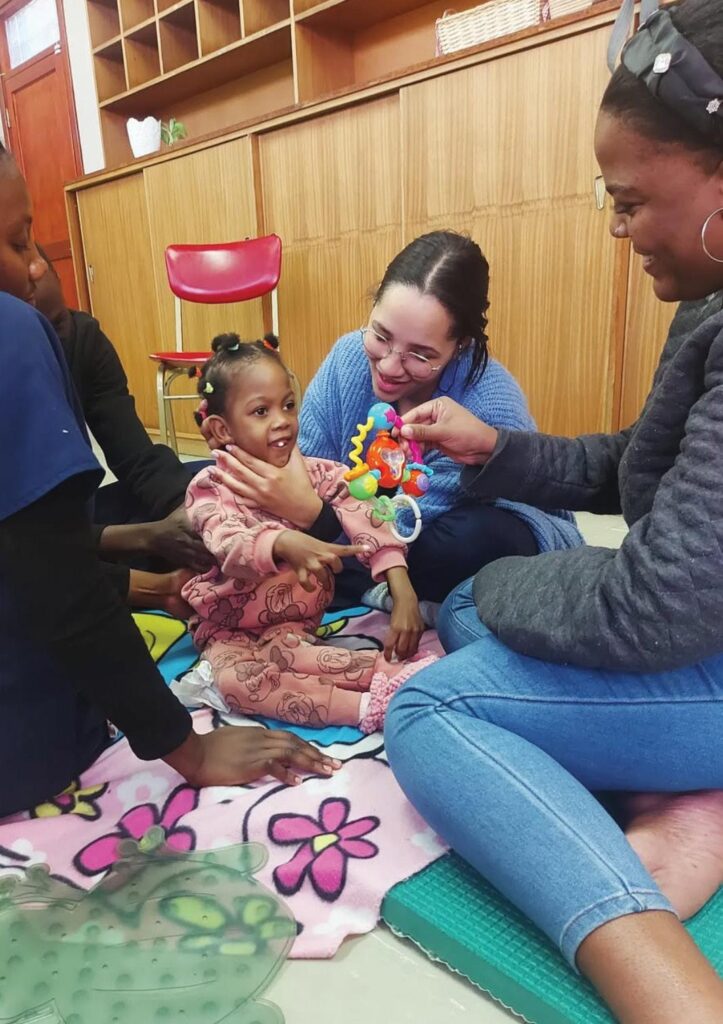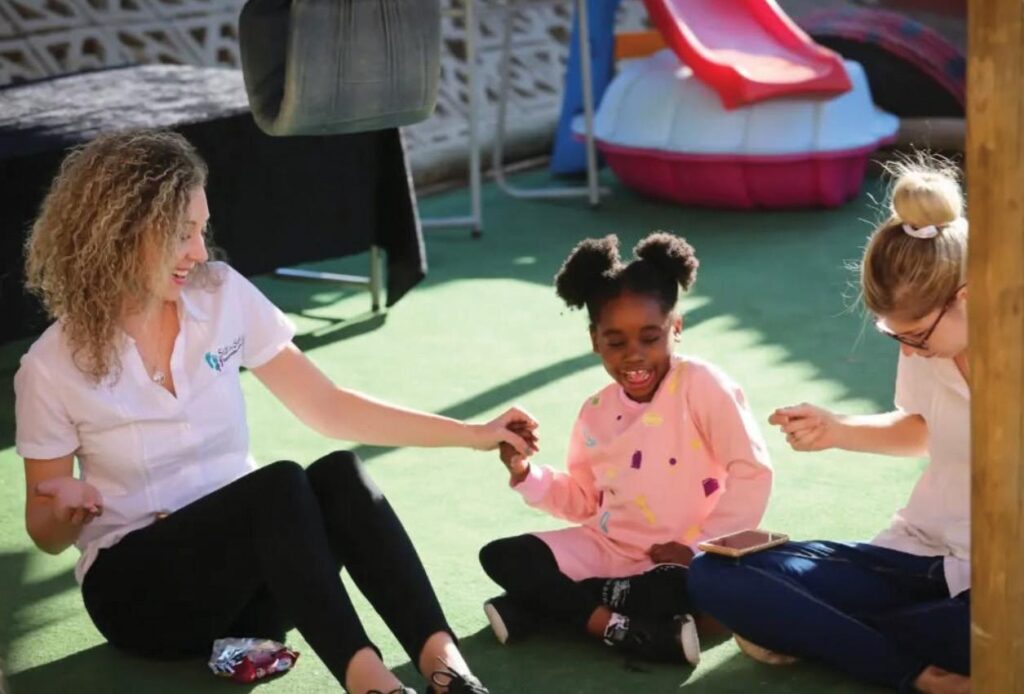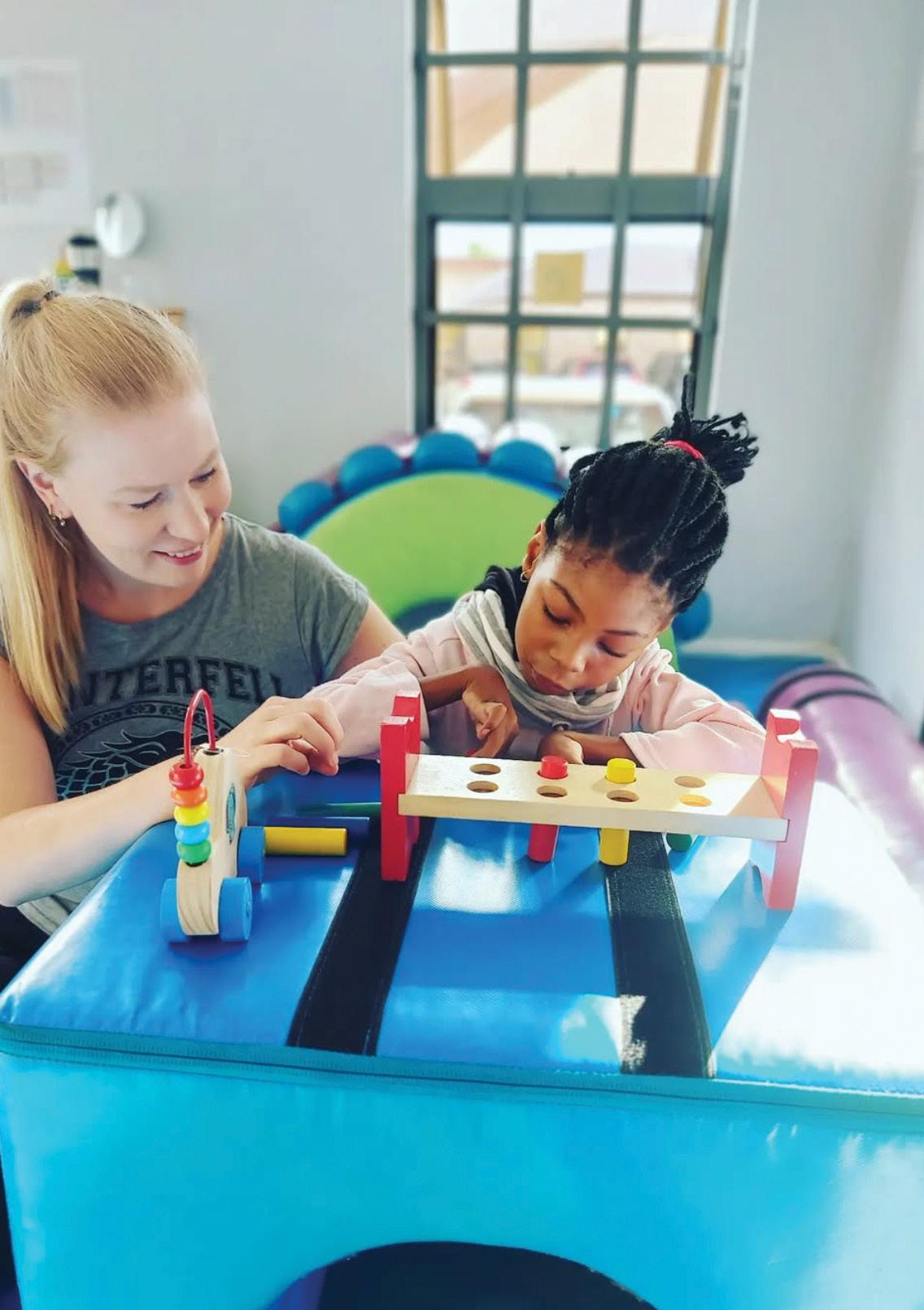How Side by Side is rewriting the story of children with disabilities in Namibia




In Namibia, a country rich in cultural diversity, the fight for inclusion and the rights of children with disabilities has been long, challenging and filled with moments of profound transformation. Side by Side, a non-profit organisation led by Huipie van Wyk, stands at the forefront of this fight for the future of children with disabilities and their families. For Huipie, this work is deeply personal, driven by the experience of raising a child with cerebral palsy and witnessing the profound challenges that families face in a system that often leaves them to fend for themselves.
As Huipie explains, disability is more prevalent than many realise, and it can affect any family. It requires early intervention, and with the right support, what may seem like an insurmountable challenge can be transformed into an opportunity for growth, with barriers gradually dismantled.
Disability can strike unexpectedly, whether due to complications at birth, a car accident or a medical condition like a stroke. It serves as a reminder that no one is immune to it and that it is in fact a miracle when we escape these challenges.
The organisation’s approach is grounded not only in providing physical support, like wheelchairs and mobility devices, but also in offering psychological support, vocational training and a deep commitment to inclusive education and community integration.
BREAKING DOWN BARRIERS
Talking with Huipie is a powerful reminder of the importance of inclusivity. She shares countless stories of how Side by Side has transformed the lives of children like Peter, a young boy with no use of his arms who dreams of becoming a firefighter. One day Peter told Huipie, “I probably need hands to fight fires.” Instead of dismissing his dream, Huipie encouraged him, saying, “You could be a firefighter in a different way – perhaps as an IT technician, ensuring all the equipment works and emergency calls are coming in.”
Though he lacks arms, 13-year-old Peter writes with his mouth and is a valued member of the Side by Side community. In fact, he often teaches maths to younger children. His story embodies the core message of Side by Side: you don’t have to ft into society’s narrow expectations. You simply need to fnd your own unique way to contribute.
At the heart of Side by Side’s work is the belief that inclusivity should be the norm, not the exception. This means creating spaces – whether in schools, communities or healthcare systems – where children with disabilities are seen, heard and valued for who they are. “Children with disabilities are often kept out of mainstream schools,” Huipie explains. “But with the law now mandating inclusion, we have the chance to create real change. We want to see children with disabilities in the same schools, learning alongside their peers. It’s a long journey, but every step we take brings us closer.”
THE STRAIN ON FAMILIES
Huipie speaks passionately about the emotional and financial toll of raising a child with a disability. Mothers, who are often the primary caregivers, experience immense emotional strain from the constant battles for healthcare, education and resources. These struggles are compounded by the broader community’s lack of understanding and support.
Families are often left to navigate complex systems on their own, without guidance on how to access the necessary services. The emotional toll of raising a child with a disability can also be compounded by the practical challenges of securing even the most basic of needs.
More than just providing physical devices like wheelchairs, Side by Side recognises that children with disabilities need support across psychological, emotional and educational dimensions. “Disability doesn’t stand alone,” Huipie explains. “It’s a child who has epilepsy, cerebral palsy or any other condition, and they still need an education. We advocate for them in every area of their life – education, health or social integration.”
Side by Side’s goal is to empower families to be strong advocates for their children. “The ultimate goal is to build self-sufficiency in the families we work with,” she shares. “We want them to be able to advocate for their children in healthcare, education and society. It’s about giving them the confidence to challenge systems and to say, ‘This is what my child needs.’ When they do that, they change the systems around them.”
To support this goal, Side by Side works closely with Early Childhood Development (ECD) centres, teachers and nurses across the country, helping them better integrate children with disabilities into everyday life.
Their multidimensional approach also extends to providing much-needed psychosocial support for parents, particularly mothers who often face isolation, emotional strain and financial challenges.
EVERY CHILD HAS THE POTENTIAL TO THRIVE
Despite the challenges, Side by Side has witnessed countless moments of triumph. Children once thought incapable of basic tasks are now speaking up for their rights and needs. For Huipie, the motivation to continue lies in these small victories, like a child learning to read and write or taking part in a school play – milestones once considered out of reach for children with disabilities. She recalls how grandparents travelled from the north to see their grandchildren perform in an end-of-year concert, a performance that the children themselves had helped plan. These are the same children whose families once believed they would never be able to do anything. Now, they are performing on stage, speaking and participating. It is a powerful reminder that, with the right support and opportunities, every child has the potential to thrive.




LOOKING AHEAD
The fight for inclusion is far from over, but Side by Side is making real strides. From a humble beginning with just 24 children in 2017, they have 120 children they support daily, the number fluctulates to over 600 children, each with unique needs and stories. But with this growth comes an even greater responsibility.
“We’ve done a lot, but we can’t do it alone,” Huipie stresses. “The more people who understand the need for inclusive education, the better. We need more funding, more volunteers and more awareness. Every family needs a multidisciplinary team to support them – from healthcare professionals to teachers to therapists.”
As Side by Side continues its advocacy, Huipie’s message remains clear: inclusion is not a privilege; it is a right. It is time for Namibia to move past the idea that disability is a burden and start recognising it as a community challenge that requires collective effort, understanding and action.
Kirsty Watermeyer







